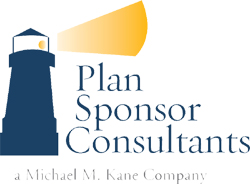A Marathon for Everyone
Recently, I went to cheer on a friend running in her first marathon. The excitement of watching thousands of people accomplish such an amazing goal was an experience like no other. I waited at the last bend before the finish line so I’d have a good vantage point for cheering my friend on. What I did not expect was the wave of emotion that washed over the faces of each runner as they saw the finish line for the first time. There were people from all walks of life, from young athletes trying to beat previous race times to cancer survivors celebrating their health by completing an exhausting 26.2-mile race. No matter their reason for running, they all had obstacles to overcome in order to make it across that finish line.
Training for the Financial Marathon
For many people, their ultimate financial goal is to reach a comfortable retirement with enough energy in reserve to enjoy it. Like running a marathon, this is a long-term goal that takes preparation and persistence.
As the plan sponsor of your company’s retirement plan, you play a crucial role in helping your employees reach toward their long-term financial goals. Imagine yourself as a trainer: you are there to build a training regimen to help your employees work toward their goal and keep them motivated along the way.
Setting Attainable Goals
A good trainer will assess their athlete’s health and ability before committing to a race. It is important to align goals and position your employees for success. If they’re not yet ready to run a marathon, that’s fine; they may need to start with a 5K or 10K instead.
If retirement is not your employees’ most pressing financial concern, consider offering financial counselling, wellness programs, or plan design options that address whichever issues are causing the most stress, such as:
- emergency savings
- student loans
- credit card debt
- healthcare costs
If emergency savings is a common concern, your employees are not alone! Many have little to no money in savings: 45% report having less than $25,000 saved, and 26% report having less than $1,000.[1]
The Federal Reserve reported $1.4 trillion in student loan debt at the end of 2017.[2] This is a huge concern for younger employee! Eight out of ten Millennials that carry student loan(s) say that debt has a moderate or significant impact on their ability to meet their other financial goals.[3]
Three out of five employees consistently carry balances on their credit cards, and 40%of those folks are finding it extremely difficult to make their minimum payments on time each month.3 This kind of debt is extremely common for Millennials and Gen Xers.
Healthcare is one of the largest expenses in retirement. A vast majority of workers (81%) haven’t even tried to calculate how much money they would need to cover healthcare costs in retirement.[4] As it turns out, the average couple will need a staggering $280,000 for medical expenses in retirement, excluding long-term care.[5]
Anticipate Obstacles
Talk to any marathon runner and they can tell you all about the walls they might hit during a race. For some, that wall might be a soul-crushing hill; for others, it’s the 13.1 split; still others may even experience injuries that make them question whether they can push themselves to reach the finish line.
Even if your employees do save for retirement, hitting obstacles can force them to take out loans from their 401(k) plans. 44% of employees think it’s likely they’ll need to take money out of their retirement plans to pay medical bills, credit cards, education expenses, or unexpected costs. 3
401(k) loans can be a difficult obstacle to overcome. You may consider tightening loan provisions to deter employees from using their nest egg as a rainy-day fund.
The Real Trick
Athletes and trainers alike will be happy to offer tips and tricks to make finishing the marathon easier, from Vaseline on your feet to fancy supplements, but at the end of the day, the only way you can finish the race is if you start running in the first place.
As a plan sponsor, make sure that the 401(k) enrollment process is simple and designed in the best interests of your employees. At our firm, we are dedicated to helping our clients pursue their financial goals and can help you build a plan that will help to keep your employees on track to reach toward the finish line of their retirement.
[1] Helman, Ruth. “2018 EBRI/Greenwald Retirement Confidence Survey” April 2018.
[2] US Federal Reserve. “Consumer Credit- G.19.” April 6, 2018.
[3] PricewaterhouseCoopers LLP. “Employee Financial Wellness Survey” (2018): PWC. May 2018.
[4] Helman, Ruth. “2018 EBRI/Greenwald Retirement Confidence Survey” April 2018.
[5] Fidelity Viewpoints “How to plan for rising health care costs.” April 18, 2018.



